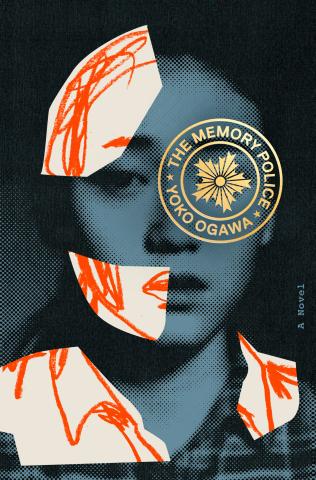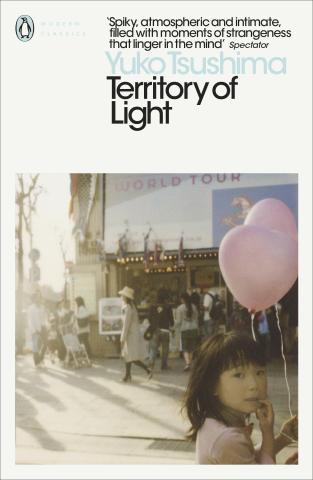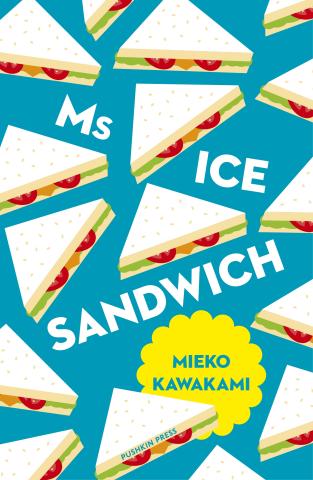
In the early years of the 11th century, Lady Murasaki Shikibu, a poet and noblewoman at the Imperial Court in Kyoto, put ink brush to paper and began writing the tumultuous life of an imaginary prince called Genji. By the time she was done, she had written the world’s first novel, The Tale of Genji. Around the same time, her contemporary, another lady-in-waiting, Sei Shōnagon penned The Pillow Book, a personal account of court life told through lists, gossip, and vivid observations that is now recognized as a foundational masterpiece of memoir. In the centuries since, Japan has produced more than its share of female literary pioneers, in every conceivable genre and style, and that vibrant tradition can be seen today. As a starting place to explore this heritage, here is a sampling of five recent women writers whose work is shaping Japanese literature – and through increasing rates of translation, the literature of the world.
Five Writers to Know:

1. Yoko Ogawa
Yoko Ogawa’s book “The Memory Police” was recently named finalist for the 2019 National Book Award for translated literature, the latest in a long career of prizes and accolades. As a young wife, Ogawa had temporarily put her own writing ambitions on hold, but continued to write in secret. The first her husband knew about her writing was with the publication of her debut “The Breaking of the Butterfly” in 1988, which won the Kaien literary prize and established her as a chronicler of the surreal interactions of the human heart.
Her works often examine the intimate, offbeat, and potentially dangerous, dependencies between people, as in “The Housekeeper and the Professor” (later adapted to film), where a housekeeper goes to work for a brilliant but disabled mathematician, or in “Hotel Iris”, in which a lonely teenage girl begins an increasingly volatile affair with a widower. Collections of her novellas and short stories like “Revenge” and “The Diving Pool” showcase Ogawa’s ability to access psychological truth through settings and characters that are often unreal - some darker than others. Though “The Memory Police” was written in 1994, its plot about a nameless island where objects regularly disappear and a police force ensures they are forgotten, could not be more timely for an age of political upheaval and “post-truth”.

2. Yuko Tsushima
Yuko Tsushima was born into a literary family but also a lineage of tragedy: her father was the famed novelist Osamu Dazai, who committed suicide when she was only one year old. She took on a pen-name to strike out on her own, and in her early 20s after graduating from Shirayuri Women’s University, she began publishing fiction that quickly won acclaim, like her first book of collected stories “Carnival”. Her work examined the inner lives of marginalized people, particularly women, who struggle with their daily lives and inner desires while hemmed in by societal expectations.
As seen in “Child of Fortune”, winner of the 1978 Women’s Literature Prize, she often focused on non-traditional families and her own difficult experience as a single mother (and a daughter raised by one), though she declined to apply the “feminist” label to her own writing. Still, she put a distinctly female spin on the existing form of the “I-novel” (Shishōsetsu), the semi-autobiographical, confessional mode of writing that had emerged in the Meiji era, and that is considered a predecessor to the more recent Western genre of “autofiction”. Though Tsushima died in 2016, some of her works are only now being published in English translation for a global audience to discover, like 2019’s acclaimed “Territory of Light”, a sequence of linked stories she originally wrote in 1979 for Japanese literary magazine Gunzō. “Territory of Light” follows a year in the life of a recently divorced single mother and her 2 year-old daughter, and shows Tsushima’s ability to capture the anguish of social isolation amidst the taboos of divorce and poverty, as well as the moments of life’s sublime beauty that shine through in spite of them.
3. Natsuo Kirino
As an inspiration to all late bloomers with literary aspirations, Natsuo Kirino didn’t start writing until her thirties and didn’t attain popularity until her forties. After an initial foray into romance writing, she turned to crime fiction, and has come to be considered the “noir queen” of Japanese literature, penning tales of society’s underbelly and the people - victims, culprits, investigators, and those in between - who are swept up in crime, violence, and other desperate acts. After winning the Edogawa Rampo prize (named after Japan’s pioneering mystery writer) with her 1993 debut “Rain Falling on my Face”, her breakout work was 1997’s “Out” (winner of the Mystery Writers of Japan prize and later adapted to film in 2002). “Out” tells the story of four very different working-class women who are united by their night-shift job at a bento factory - and by the shocking murder that they must work together to cover up. In “Out” and her subsequent books “Grotesque” and “Real World”, Kirino has been praised for her hard-boiled style and attention to social issues and psychological depth as much as thrilling plots. For her latest book, 2018’s “Rojo no X” (Anonymous on the Streets, which hasn’t yet received English translation), Kirino focuses on the vulnerable position of young women engaged in “compensated dating” (enjo kosai), and how they reflect the underemployment crisis facing Japan as a whole. Throughout her work, Kirino depicts average people in difficult situations who must make impossible choices - but instead of moral judgement, she maintains a deep understanding of the complexities of human nature.
4. Hiromi Kawakami
Though Hiromi Kawakami’s first short story was published in science fiction magazine NW-SF, her work is less sci-fi and more magical realist fiction that gently tests the boundaries of reality. After winning the Akutagawa Prize with her second book “Tread on a Snake” in 1996, Kawakami became a household name with 2001’s “Strange Weather in Tokyo” (or “The Briefcase”), a best-seller which established her quirky, fable-like voice and prompted comparisons to Banana Yoshimoto and Lewis Carroll. The novel traces an unlikely but touching relationship that slowly blossoms when a depressed office-worker, a woman in her 30s, crosses paths with her former high school teacher, a retired man in his 70s. Kawakami revisited this same pair in the novella “Parade”, which appeared in English translation in 2019; in it, the woman Tsukiko describes a childhood encounter with the folkloric creatures known as “tengu” - or was it all a dream? The blurred line between fantasy and reality is also explored in 2003’s “The Ten Loves of Nishino” (adapted to film in 2014, and published in 2019 in English). Kawakami is at the peak of her powers with this tale of a legendary playboy, as filtered through the voices of ten of his ex-lovers with passion, nostalgia, and bittersweet humor. In deceptively simple prose, her fiction often asks how we much we must deceive ourselves just to get through the day - and how imagination might be the key to brighter futures.

5. Mieko Kawakami
Mieko Kawakami first became known for her revealing blog in the mid-2000s, in which she charted the highs and lows of life as a millennial singer and poet. She wrote in the slang-y Osaka dialect of her hometown, and gained passionate fans who felt she was speaking directly to them through this casual medium. She began writing fiction, and with her third novella, 2008’s “Breasts and Eggs” (English translation to be published in 2020), caught the attention of the establishment, garnering that year’s Akutagawa prize.
Though some of the older generation, including Shintaro Ishihara (then Tokyo’s governor, and a former “angry young man” of Japanese literature), derided her work for its youthful immediacy and brash depictions of the body and sexuality, others like Haruki Murakami called her his favorite new writer. Kawakami later conducted a series of interviews with Murakami from 2015-2017, eventually published as “Haruki Murakami: A Long, Long Interview”, in which she didn’t shy away from asking the literary giant critical questions about the objectification of women in his books. Kawakami’s recent novella “Ms Ice Sandwich” (published in English in 2018) charts a troubled young man’s crush on a woman working at his local sandwich shop, and also represents an evolution of the author’s style. It’s written with the chatty, diaristic detail that is her signature, but marked by a new grappling with generational conflict and the pain of loss.

